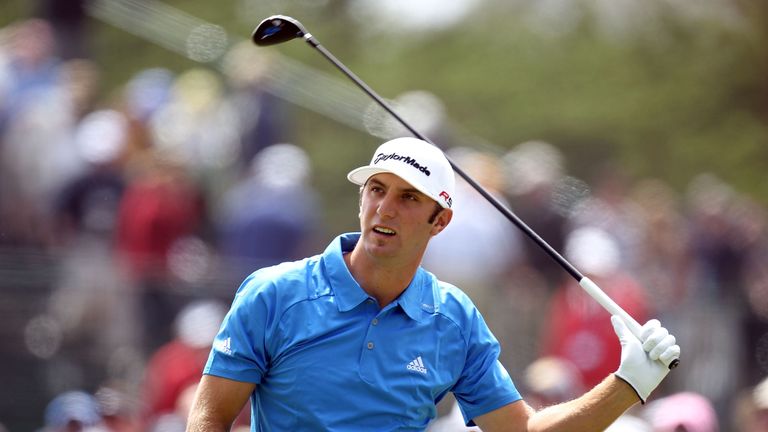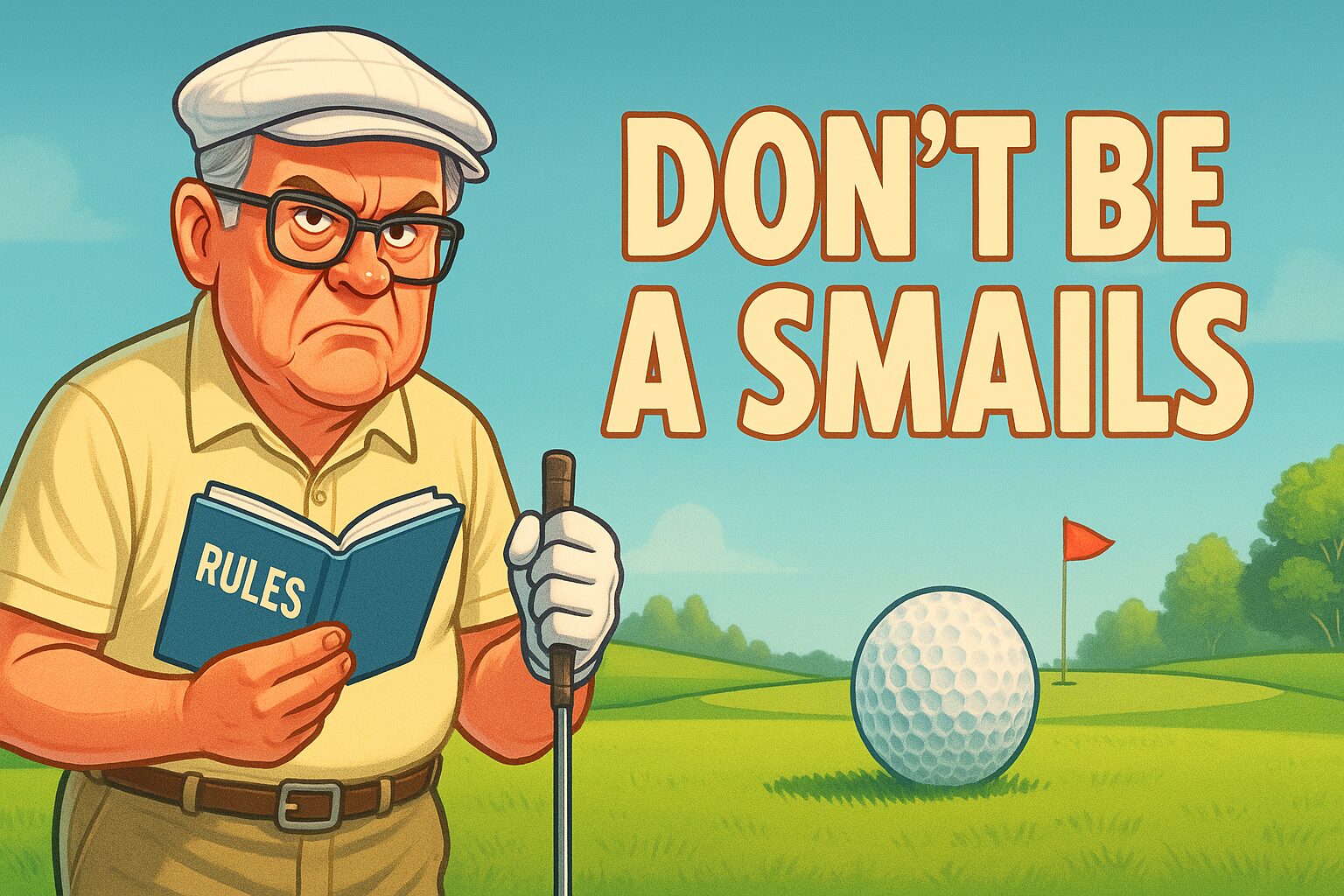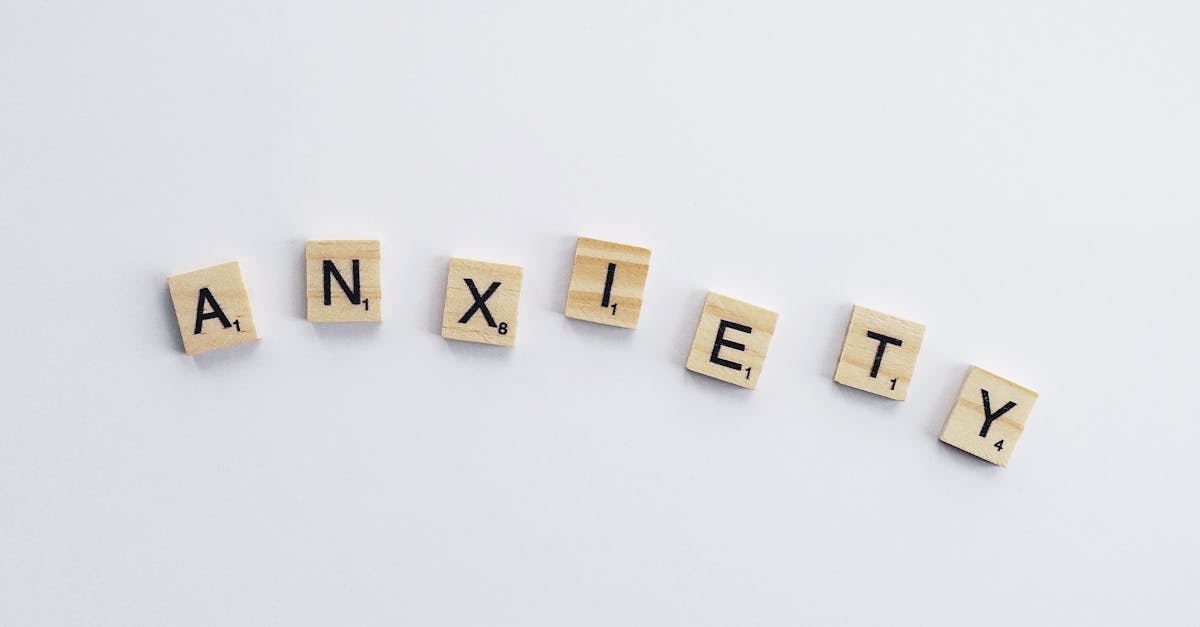Blog
9 Biggest Chokes Of The Past Decade

We look at nine tournaments where one of the leading players looked certain to win until messing up…
The decade is almost up so below we look back on nine tournaments that had dramatic endings. Dramatic because the person who we thought was going to win ended up ‘choking’ so to say and handing the tournament to somebody else.
Dustin Johnson – 2010 US Open

The award for choke of the decade has to go to Dustin Johnson, who imploded during the final round of the 2010 US Open. The American held a three stroke lead over Graeme McDowell but that evaporated very quickly. He made a complete mess of the 2nd hole to triple-bogey it after a left-handed chip and then a near air shot when trying to play a flop shot. He then doubled the next, bogeyed the 3rd and it didn’t get better from there, finally signing for an 11 over par 82.
Rory McIlroy – 2011 Masters

Rory McIlroy held a four-stroke lead heading into the final round at Augusta in 2011 with his first Major victory looking likely. The Northern Irishman got off to a shaky start with a bogey on the opening hole but composed himself to remain in the lead with the back nine to play, where it would all go wrong. He played the back nine in seven over par after beginning it triple-bogey-double to shoot 80. He hooked it left into cabins on the 10th tee and then later hit a tree with a pitch shot before three-putting the 11th and then four-putting the 12th.

Rory bounced back in incredible fashion, however, going on to win the US Open two months on by eight strokes.
Jordan Spieth – 2016 Masters
Another back nine Augusta collapse came five years later in 2016 after Jordan Spieth had just made four birdies in a row to lead by five. However, he began the back nine bogey-bogey-triple after hitting it into the water on the par-3 12th twice. Spieth ultimately lost to Danny Willett by three.
Martin Kaymer – 2015 Abu Dhabi Championship

The German was known as one of the best closers in the game having won two Majors, reached the World Number One position and won 11 European Tour titles.
Kaymer birdied three of the opening four holes to lead the tournament by 10 shots but he then played the remainder of the round in six over to lose to France’s Gary Stal.
He still hasn’t won since the 2014 US Open, so perhaps his Abu Dhabi collapse is the reason why he has gone winless for over five years?
Adam Scott – 2012 Open Championship

The Aussie looked set to finally capture his maiden Major at the 2012 Open Championship with a four shot lead with just four to play. Scott unfolded spectacularly with four straight bogeys to lose out by one after Ernie Els birdied the 18th. Luckily for the Aussie, he won the Masters the following year but this must still sting.
Robert Garrigus – 2010 FedEx St Jude Classic

Garrigus squandered a three stroke lead with just a single hole to play at the FedEx St Jude Classic in 2010. The American pulled his drive left into the water hazard, dropped back with his third and pulled that too across to the other side of the lake before pitching out to the fairway. He hit his fifth shot onto the green to some 35ft before two-putting for a triple-bogey. He fist-pumped after holing his triple-bogey putt but then hit it behind a tree in the playoff with Lee Westwood and Robert Karlsson, ultimately being eliminated on the first extra hole. Westwood prevailed to win his first PGA Tour title in what was despair for Robert Garrigus.
Kyle Stanley – 2012 Farmers Insurance Open
Just like Robert Garrigus, Kyle Stanley had a three stroke advantage with a single hole to play at the 2012 Farmers Insurance Open at Torrey Pines. Luckily for Stanley, he had a par-5 ahead of him so could play it conservatively, laying up to 77 yards. From there it went all wrong. He hit his wedge beyond the hole but it spun back into the water and he then hit his fifth shot onto the green and three-putted for a triple-bogey 8. After holding a six-stroke lead with nine to play, he eventually lost to Brandt Snedeker in a playoff. “I know I’ll be back,” an emotional Stanley said post-round. “It’s tough to swallow right now.” Luckily for Stanley, he was back and went on to win the very next week at the Waste Management Phoenix Open.
After holding a six-stroke lead with nine to play, he eventually lost to Brandt Snedeker in a playoff. “I know I’ll be back,” an emotional Stanley said post-round. “It’s tough to swallow right now.” Luckily for Stanley, he was back and went on to win the very next week at the Waste Management Phoenix Open.
Dustin Johnson – 2017 WGC-HSBC Champions
The World Number One (at the time) held a six stroke lead after 54 holes but shot five over in the final round to squander the chance of another WGC title. DJ finished two back of Justin Rose who shot five under, after the American made five bogeys and not a single birdie in the final round.

The World Number One (at the time) held a six stroke lead after 54 holes but shot five over in the final round to squander the chance of another WGC title. DJ finished two back of Justin Rose who shot five under, after the American made five bogeys and not a single birdie in the final round.
Bryson DeChambeau – 2018 European Open
 The American was playing with Richard McEvoy in the final group at the European Open and had the advantage due to his length with three par-5s in the last four holes. It looked the certain that the Golfing Scientist would go on to lift his first European Tour title. However, he got the hooks and made back-to-back bogeys on the 15th and 16th to drop to +3 for the day and then made a triple-bogey on the last to shoot 78. He was criticised after and later apologised for his handshake with Richard McEvoy on the 18th where he understandably stormed off.
The American was playing with Richard McEvoy in the final group at the European Open and had the advantage due to his length with three par-5s in the last four holes. It looked the certain that the Golfing Scientist would go on to lift his first European Tour title. However, he got the hooks and made back-to-back bogeys on the 15th and 16th to drop to +3 for the day and then made a triple-bogey on the last to shoot 78. He was criticised after and later apologised for his handshake with Richard McEvoy on the 18th where he understandably stormed off.
By: Elliott Heath of Golf Monthly

Blog
The Unofficial Rules of Golf: A Gentleman’s Guide to Not Being Judge Smails
The official rulebook is thicker than a dictionary and twice as boring. Let’s talk about the rules that really matter on the course: how to have fun, respect the game, and not be a stick-in-the-mud. Hint: It involves less plaid and more cosmic harmony.

You’ve seen him. I’ve seen him. The guy who quotes the USGA rulebook like it’s scripture. He’ll happily tell you your ball moved a quarter of an inch when you addressed it, costing you a penalty stroke. He’s got a plumb bob for a three-foot putt and the personality of a rake. He is, in spirit, Judge Smails. And let’s be honest, nobody wants to be Judge Smails.
The real game of golf, the one that keeps us coming back, isn’t played by those rules. It’s played by a higher law. An unwritten code of conduct that’s all about flow, friendship, and the pursuit of that one perfect shot. It’s a gentleman’s agreement with the universe.
So, let’s talk about the rules that actually matter.
1. The Cosmic Readjustment (aka The Mulligan). Your first tee shot is a mess. It goes sideways into the woods where the gophers play. The Smails of the world would tell you to take a penalty and hack it out. I say the universe is just getting warmed up. The “breakfast ball” isn’t cheating; it’s a course correction. It’s an agreement among friends that a round of golf shouldn’t be ruined before it even begins. Take another. The Dalai Lama would want you to.
2. The Art of Flow (aka Pace of Play). This isn’t about rushing. Rushing is a fool’s game. This is about flow. It’s about being ready to hit when it’s your turn. It’s about watching your friend’s shot so you can help them find it. It’s about moving with a purpose, not like you’re searching for your car keys in a dark parking lot. Don’t be the anchor that drags the whole group down. See the line, hit the ball, walk on. Nanananana.
3. The Circle of Friendship (aka Gimmes). Is the putt inside the leather? Good enough. Pick it up. Life is too short to watch your buddies sweat over an 18-inch putt for a double bogey. A gimme isn’t just a time-saver; it’s a gesture of goodwill. It says, “I trust you, you trust me, and neither of us needs the anxiety of missing this tiny putt.” It’s good for the karma, and even better for the pace of play.
4. The Final Verdict (aka The 19th Hole). The most important rule is this: no matter what happened out there, you shake hands on the 18th green and settle things over a cold drink at the 19th. The guy who shot an 82 and the guy who shot a 102 are equals in the clubhouse. The stories get better, the putts get longer, and the bad shots fade away. This is where the real game is won.
So, forget about the fine print. Focus on the feeling. Be a good playing partner, enjoy the walk, and don’t be a Smails. You’ll find your score starts to take care of itself.
Did this speak to your soul? Pass it along to your foursome to make sure everyone is on the same page. For more deep thoughts from the fairway, be sure to follow us on social media. It’s the right thing to do.
Blog
When Golf Gadgets Fail: Navigating Common Tech Mishaps on the Golf Course
A Look at What Happens When Modern Golf Gadgets Go Wrong

Imagine this: you’re on the golf course, teeing off on a beautiful, sunny day. With the help of your trusty golf gadget, you’re confident you’ll hit a birdie or even an eagle. But just when you’re about to swing, your gadget malfunctions. Suddenly, your perfect game is thrown into chaos. Welcome to the world of technology fails, where even the most advanced golf devices can sometimes let you down. In this article, we’ll explore some common tech fails and provide some tips on how to handle them.
When Golf Gadgets Let You Down
Modern golf devices, from smart clubs to digital scorecards to GPS-enabled watches, have revolutionized the game. They provide golfers with real-time data, helping them refine their swing, choose the right club, and navigate the course. But what happens when these devices fail?
Unreliable Data
One of the most common golf gadget fails is inaccurate or unreliable data. GPS devices might show the wrong distance to the pin, swing analyzers might give incorrect feedback, and digital scorecards might miscalculate your score. This can be frustrating, especially when you’re relying on these devices to improve your game.
Battery Drain
Another common issue is battery drain. Many golf gadgets require a significant amount of power, and if they’re not properly charged, they can die in the middle of a game. This leaves you without the data you need to make informed decisions on the course.
Technical Glitches and Malfunctions
Sometimes, golf devices just stop working. They might freeze, crash, or refuse to turn on. These technical glitches can be caused by software bugs, hardware issues, or even user error.
Preventing Golf Gadget Fails
While it’s impossible to prevent all golf gadget fails, there are steps you can take to minimize the risk.
Regular Updates
Keeping your devices updated can help prevent software-related issues. Regular updates often include bug fixes and improvements that can enhance the performance of your device.
Proper Charging
To avoid battery-related problems, make sure to fully charge your devices before hitting the course. Some devices also have power-saving modes that can help extend battery life.
Backup Plan
It’s always a good idea to have a backup plan in case your devices fail. This might mean carrying a traditional scorecard or having a basic understanding of how to calculate distances without a GPS.
When Gadgets Go Wrong: The Bottom Line
Golf gadgets are a fantastic tool for any golfer looking to improve their game. However, like all technology, they can sometimes fail. By understanding the common issues and how to prevent them, you can ensure you’re prepared for any tech-related hiccups on the course. After all, golf is about more than just the gadgets—it’s about the experience, the skill, and the love of the game.
Blog
Mastering the Art of Overcoming Choking under Pressure: Strategies for Peak Performance
Learn the skills needed to stay calm under pressure.

Imagine this: you’ve spent countless hours honing your skills, preparing for that big presentation, important meeting, or decisive sports match. But, when the big moment arrives, instead of performing at your best, your mind goes blank, your hands shake, and you flub it. The dreaded phenomenon of ‘choking under pressure’ can strike anyone, from the seasoned professional to the eager amateur. So, how do you overcome this common mental roadblock? In this article, we’ll explore effective strategies to help you conquer the fear of choking and elevate your performance under pressure.
Understanding Choking under Pressure
Before you can overcome choking, it’s crucial to understand what it is. Psychologists define choking as performing below your ability under pressure. This can be due to heightened anxiety, overthinking, or fear of failure. The irony is, the more you care about performing well, the more likely you are to choke.
Why Do We Choke?
Several factors contribute to choking under pressure. Here are a few:
-
- Fear of Negative Evaluation: The fear of being judged negatively by others can cause significant anxiety, leading to poor performance.
- High Stakes: When the stakes are high, and the outcome is important, the pressure can cause you to underperform.
- Overthinking: The tendency to scrutinize every detail in high-pressure situations can divert your focus from the task at hand.
Strategies to Overcome Choking
Now that we understand why we choke, let’s delve into strategies to prevent it:
- Practice Under Pressure: Simulate high-pressure situations during practice to acclimate yourself to the stress.
- Focus on the Process, Not the Outcome: Concentrating on the process helps keep your mind focused and prevents overthinking.
- Use Positive Affirmations: Positive self-talk can boost your confidence and reduce anxiety.
Case Studies: Athletes Overcoming Choking
Many successful athletes have overcome choking to deliver exceptional performances. Take Michael Jordan, for example. He often missed crucial shots early in his career but used these failures to fuel his determination and eventually became renowned for his clutch performances. Similarly, Serena Williams has bounced back from choking in several matches to claim victory, demonstrating her mental toughness.
Choking under pressure is a common phenomenon, but with the right strategies, it can be overcome. By understanding the causes of choking and implementing techniques like practicing under pressure, focusing on the process, and using positive affirmations, you can learn to perform at your best when it counts the most. Remember, it’s not about never feeling pressure; it’s about learning how to thrive within it.
As Michael Jordan said, “I’ve missed more than 9,000 shots in my career. I’ve lost almost 300 games. 26 times, I’ve been trusted to take the game-winning shot and missed. I’ve failed over and over and over again in my life. And that is why I succeed.” So, next time you face a high-pressure situation, think of it as an opportunity to grow, not a threat to be feared.
If you’ve enjoyed this article and want to learn more about mastering your mental game, subscribe to our newsletter for more tips and strategies. Or, if you’re ready to take your mental toughness to the next level, check out our other articles designed to help you conquer pressure and perform at your peak.
-

 Product Review6 years ago
Product Review6 years agoThe Perfect Practice Putting Mat Review by Jason Tenzer
-

 Blog4 years ago
Blog4 years agoLoophole Rule Offers PGA Tour Pros a Mulligan
-

 Blog4 years ago
Blog4 years ago2021 Buyer’s Guide: The Top 10 Value Golf Balls For Distance & Feel
-

 Blog5 years ago
Blog5 years agoGolf Marriage Counselor
-

 Product Review6 years ago
Product Review6 years agoTHE ADJUSTABLE IRONS: WALKING STICKS GOLF CLUBS
-

 Blog4 years ago
Blog4 years agoWhat Your Golf Clubs Say About You
-

 Equipment6 years ago
Equipment6 years agoOHK Sports Interview by Jason Tenzer
-

 Product Review6 years ago
Product Review6 years agoSparms Product Review – Save the Sunburn for the Beach
















